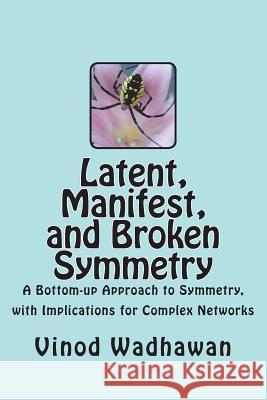Latent, Manifest, and Broken Symmetry: A Bottom-up Approach to Symmetry, with Implications for Complex Networks » książka
Latent, Manifest, and Broken Symmetry: A Bottom-up Approach to Symmetry, with Implications for Complex Networks
ISBN-13: 9781463766719 / Angielski / Miękka / 2011 / 206 str.
Latent, Manifest, and Broken Symmetry: A Bottom-up Approach to Symmetry, with Implications for Complex Networks
ISBN-13: 9781463766719 / Angielski / Miękka / 2011 / 206 str.
(netto: 43,74 VAT: 5%)
Najniższa cena z 30 dni: 42,84 zł
ok. 16-18 dni roboczych.
Darmowa dostawa!
There is a subtle kind of symmetry called latent symmetry which manifests itself only when the conditions are right. It can occur in systems composed of equal or equivalent components. It lies dormant or latent, and becomes manifest when the components happen to have certain special mutual placements. Although the latent-symmetry idea has been around for more than a decade, not many natural manifestations have been observed to date. But a recognition of the possibility of latent symmetry enables us to formulate a comprehensive symmetry-composition principle enunciated in this book. The principle is applicable to any system composed of equal or equivalent sub-parts. And there are many such systems around. Crystals are an obvious example, the equal components being the unit cells. Several complex networks can also fall within the purview of this principle, if we take note of the approximate nature of their symmetry. This book presents such an all-inclusive view of symmetry in an accessible language. We are surrounded by symmetry and broken symmetry. From the Big Bang onwards, as our universe cooled and expanded, a series of symmetry-breaking transitions occurred, resulting in a gradual evolution of the complexity of life we see today. By now it is well recognized that discovering new broken symmetries (particularly broken gauge symmetries) is the path science must take for going deeper into the mysteries of Nature. At a very fundamental level, laws of physics are all about symmetry. The present edifice of science in general, and physics in particular, would be unthinkable without symmetry. There is a lot of symmetry even in biological systems. This book celebrates symmetry in all its forms, including latent symmetry.











